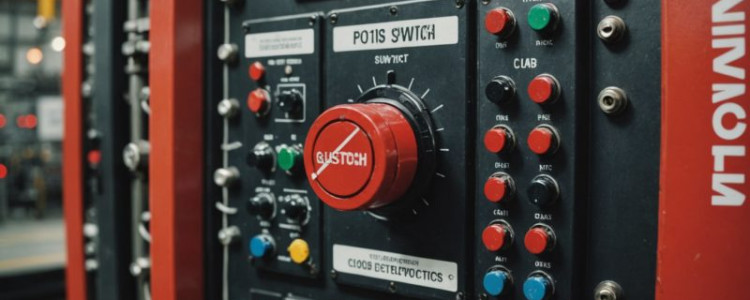Main switches, crucial components in electrical systems, serve as a bridge between the power supply and various electrical circuits. These essential devices facilitate the safe on and off operations of electrical systems, particularly in industrial environments. As industries evolve and expand, selecting the right main switch becomes imperative for enhancing safety and optimizing performance. This article explores the significance of main switches, the types available, and guidance on choosing the best option for specific needs.
What is a Main Switch?
A main switch by baltelec.eu is an electrical component that controls the flow of electricity to a circuit or system. It can disconnect power from multiple sources, ensuring that electrical systems can be turned off safely during maintenance or emergencies. This function is vital not only for the protection of equipment but also for the safety of personnel working in proximity to electrical installations.
Functions of Main Switches
- Isolation: Main switches provide isolation from the power supply, which is crucial during maintenance activities.
- Control: These switches enable quick control over the entire electrical system, allowing operators to shut down systems rapidly in case of malfunction.
- Protection: They help protect electrical equipment from damage caused by overloads or short circuits.
- Emergency Stop: In critical situations, the main switch allows for an immediate cut-off of power to prevent accidents.
Types of Main Switches
Main switches come in various types, each designed to meet different application requirements. Understanding these types is crucial for making informed decisions when purchasing switches.
1. Automatic Switches
Automatic main switches are designed to isolate circuits when specific conditions occur, such as overloads or short circuits. This facilitates immediate protection without manual intervention. They are commonly used in environments with fluctuating power loads.
2. Manual Switches
Manual main switches require human operation to turn the power on or off. These are typically employed in systems where operators can monitor and manage electrical flow safely. They are often installed in smaller-scale applications.
3. Load Break Switches
Load break switches can be operated without interrupting the circuit. They offer a safe means of disconnecting loads while maintaining circuit integrity, making them suitable for industrial applications involving heavy machinery.
4. Fused Switches
Fused main switches integrate fuses into their design, providing an added layer of protection against potential overloads. If an overload occurs, the fuse will blow, preventing further damage to the electrical system.
Choosing the Right Main Switch
Selecting the appropriate main switch is essential for optimizing performance and safety in industrial and commercial setups. Several factors should be considered when making this decision.
1. Voltage and Current Ratings
The first step in choosing a main switch involves determining the maximum voltage and current that the switch must handle. This ensures compatibility with existing electrical systems. Industrial applications often require higher ratings than residential setups.
2. Operating Environment
The operating environment significantly impacts the choice of main switch. Factors such as temperature, humidity, and exposure to chemicals or dust must be considered. For example, switches used in outdoor settings may require robust weatherproof designs.
3. Safety Standards
Ensuring that the selected main switch complies with relevant safety standards is paramount. This includes certifications from recognized international organizations. Adhering to safety standards guarantees reliable performance and user protection.
Safety Compliance Standards
| Standard | Description |
|---|---|
| IEC 60947 | International standard for low-voltage switchgear and control gear. |
| UL 98 | Standard for safety for enclosure switches. |
| BS 60898 | UK standard for circuit breakers and fuses. |
4. Maintenance Considerations
Some main switches require regular maintenance to ensure optimal performance. It’s important to consider the maintenance routine and ease of access when choosing a switch. Devices that are easier to maintain can lead to lower long-term operational costs.
The Economic Aspect of Main Switches
The costs associated with main switches vary significantly based on type, size, and features. Adopting a cost-effective approach while ensuring quality and compliance is necessary.
Cost Factors
- Type of Switch: Automatic switches may have a higher initial cost but offer long-term savings through reduced downtime.
- Installation Costs: Some switches may require more complex installation routines, affecting overall costs.
- Long-Term Reliability: Investing in high-quality switches may result in fewer failures, thus lowering maintenance and replacement costs.
Conclusion
In conclusion, selecting the right main switch is fundamental for maintaining efficient and safe electrical systems. With a variety of options available, understanding their functions, types, and economic implications can empower industries to make informed choices. By considering voltage rating, environmental factors, safety compliance, and maintenance requirements, one can ensure reliable performance, contribute to overall operational efficiency, and uphold safety standards. In the realm of industrial electrics, the main switch stands as a linchpin for reliable power management.






